- Drag drop about RIPv1 vs RIPv2

Answer:
RIPv1:
+ Classful
+ Updates sent in broadcast
+ Not support authentication
+ Non support VLSMRIPv2:
+ Classless
+ Support VLSM
+ Updates sent in multicast
+ Support authentication - Drag drop about RADIUS & TACACS+

Answer:
RADIUS:
+ Multi-vendors
+ UDP
+ Combines authentication and authorization
+ Encrypts only the passwordTACACS+:
+ Proprietary
+ Separate AAA
+ Encrypts the entire body
+ TCP - Drag drop about SDN
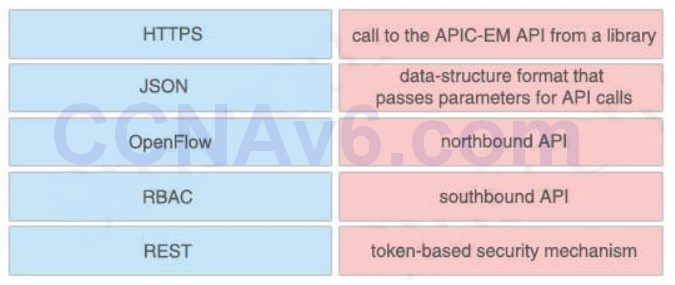
Answer:
+ HTTPS: call to the APIC-EM API from a library
+ JSON: data-structure format that passes parameters for API calls
+ OpenFlow: southbound API
+ RBAC: token-based security mechanism
+ REST: northbound APIShow (Hide) Explanation/ReferenceWhat is the data format used to send/receive data when making REST calls for APIC-EM?Javascript Object Notation (JSON) is used to pass parameters when making API calls and is also the returned data format.
What’s RBAC?
The Role-Based Access Controls (RBAC) mechanism utilizes security tokens that the controller issues upon successful authentication of a user of the APIC-EM controller. All subsequent requests from the authenticated user must provide a valid token.
- Drag drop about Static routing vs Dynamic routing
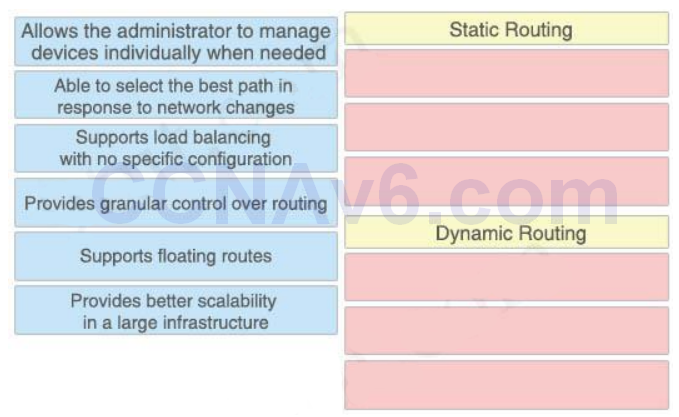
Answer:
Static Routing:
+ Allows the administrator to manage devices individually when needed
+ Supports floating routes
+ Provides granular control over routingDynamic Routing:
+ Able to select the best path in response to network changes
+ Supports load balancing with no specific configuration
+ Provides better scalability in a large infrastructure - Drag drop about DNS services

Answer:
+ cache: local database of address mappings that improves name-resolution performance
+ DNS: service that maps hostnames to IP addresses
+ no ip domain-lookup: disables DNS services on a Cisco device
+ name resolver: in response to client requests, queries a name server for IP address information
+ domain: component of a URL that indicates the location or organization type, such as .com or .edu - Drag drop about characteristics of a cloud environment.
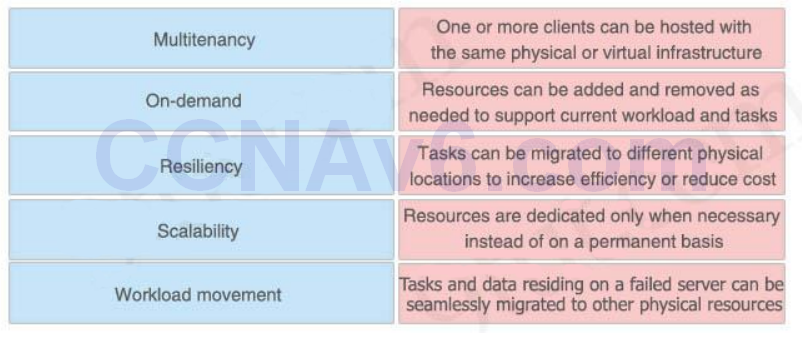
Answer:
+ Multitenancy: One or more clients can be hosted with the same physical or virtual infrastructure
+ Scalability: Resources can be added and removed as needed to support current workload and tasks
+ Workload movement: Tasks can be migrated to different physical locations to increase efficiency
or reduce cost
+ On-demand: Resources are dedicated only when necessary instead of on a permanent basis
+ Resiliency: Tasks and data residing on a failed server can be seamlessly migrated to other physical
resources - Drag the “show” commands on the left to their proper locations on the right
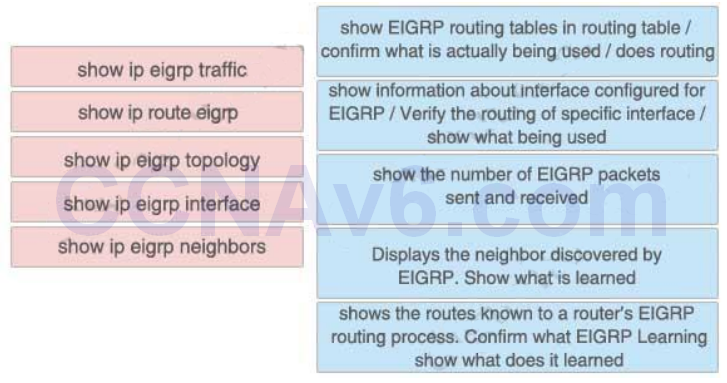
Answer:
+ show ip route eigrp: show EIGRP routing tables in routing table / confirm what is actually being
used / does routing
+ show ip eigrp interface: show information about interface configured for EIGRP / Verify the
routing of specific interface /
show what being used
+ show ip eigrp traffic: show the number of EIGRP packets sent and received
+ show ip eigrp neighbors: Displays the neighbor discovered by EIGRP. Show what is learned
+ show ip eigrp topology: shows the routes known to a router‟s EIGRP routing process. Confirm
what EIGRP learning. Show what does it learned - Drag and drop the steps to configure EIGRP IPv6 into the appropriate order.

Answer:
Step 1: enable
Step 2: configure terminal
Step 3: ipv6 router eigrp as-number
Step 4: router id
Step 5: ipv6 eigrp as-number (under interface mode) - Drag and drop the steps in the process of upgrading the IOS on a Cisco router.
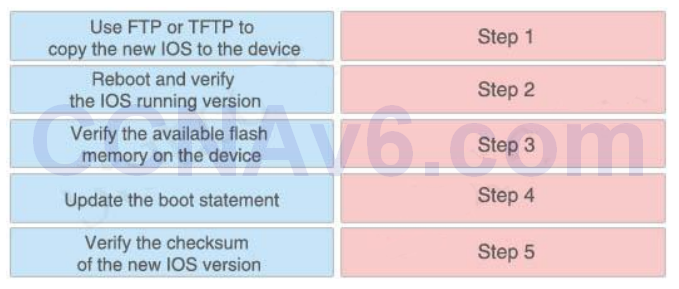
Answer:
Step 1: Verify the available flash memory on the device
Step 2: Use FTP or TFTP to copy the new IOS to the device
Step 3: Verify the checksum of the new IOS version
Step 4: Update the boot statement
Step 5: Reboot and verify the IOS running version - Drag and drop about data unit for OSI model to the correspondent places.
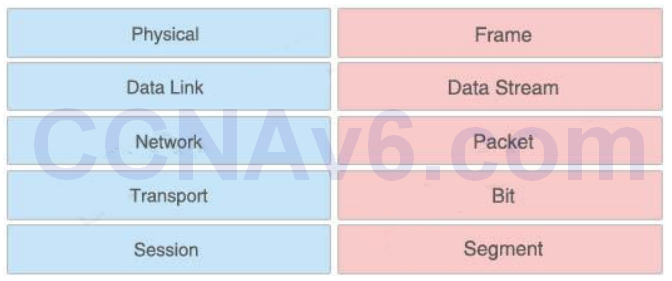
Answer:
Physical: Bit
Data Link: Frame
Network: Packet
Transport: Segments
Session: Data Stream
CCNA 200-125 Exam: Drag and Drop 2 With Answers
Subscribe
0 Comments
